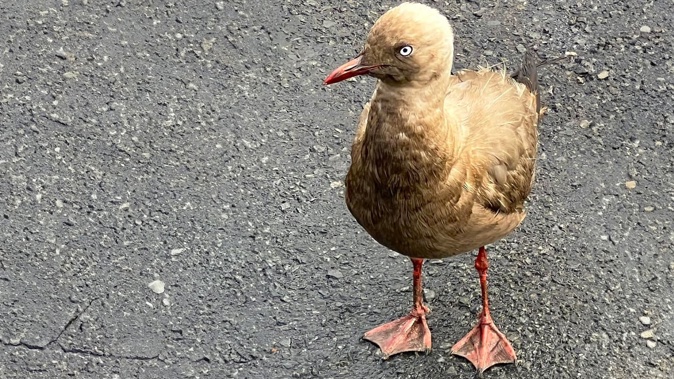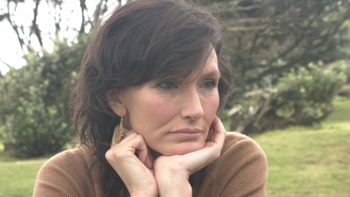
An unusual-looking gull spotted at Whangārei’s Pak’nSave supermarket carpark has shoppers wondering whether the bird is a freak of nature or a victim of pollution.
Bird lover John Ecuyer snapped this close-up picture of the unusually coloured seagull, which has otherwise been identified as a red-billed gull/ tarāpunga or akiaki. He noticed it among a group of more conventionally coloured grey and white ones this year.
Ecuyer posted the photo to a Facebook page called Leucistic Birds New Zealand, sparking debate even among that group of keen birders, as to why the gull looked the way it did.
Many people insisted it had been a victim of oil pollution; another person wondered if it had been dyed.
However, Ecuyer is convinced the bird is an “amazing example” of an oddity of nature affected by a rare genetic trait that affects feather colouration - in this case producing a smooth transition of yellowy-brown hues.
There are four such traits: Albanism, which causes creatures to lose all pigment and appear completely white - think white tui and fantails; leucism that doesn’t completely eliminate pigment but causes white patches and partial loss of colour; and xanthochroism, where normally red feathers are replaced by yellow or orange ones.
It’s the fourth trait - melanism - that Ecuyer believes the gull he photographed seemed to display. Most animals—including humans—produce melanin, which pigments hair, skin and more. In birds, it’s responsible for black, brown and tan feathers. When a bird is melanistic, it will appear much darker than the typical coloration for their species.

A more conventional looking red-billed gull. Photo / NZME
The Advocate sent a copy of the photo to Northland bird conservationist and Whangārei Native Bird Recovery Centre manager Robert Webb, who identified the bird as a Red-Billed Gull and suggested it might have been one of a group of three he cleaned this year after their misadventure with a pot of old cooking oil.
The Department of Conservation lists the status of red-billed gulls as “at risk- declining”. Although the birds are commonly seen in coastal areas, there are less than 100,000 of them remaining. Their numbers are expected to fall by 50 - 70 per cent in the next 30 years.
Sarah Curtis is a news reporter for the Northern Advocate, focusing on a wide range of issues. She has nearly 20 years’ experience in journalism, much of which she spent court reporting. She is passionate about covering stories that make a difference.
Take your Radio, Podcasts and Music with you









